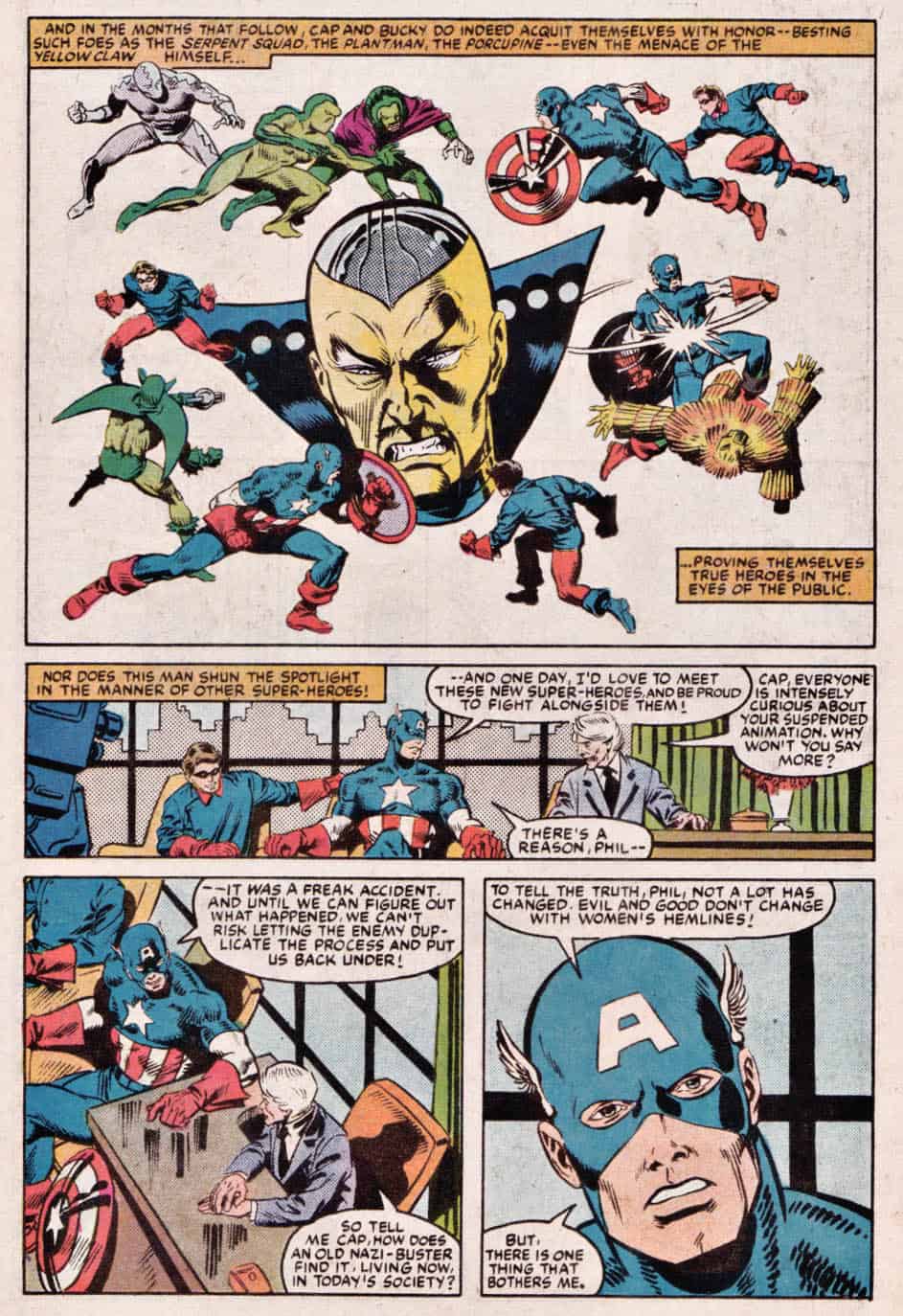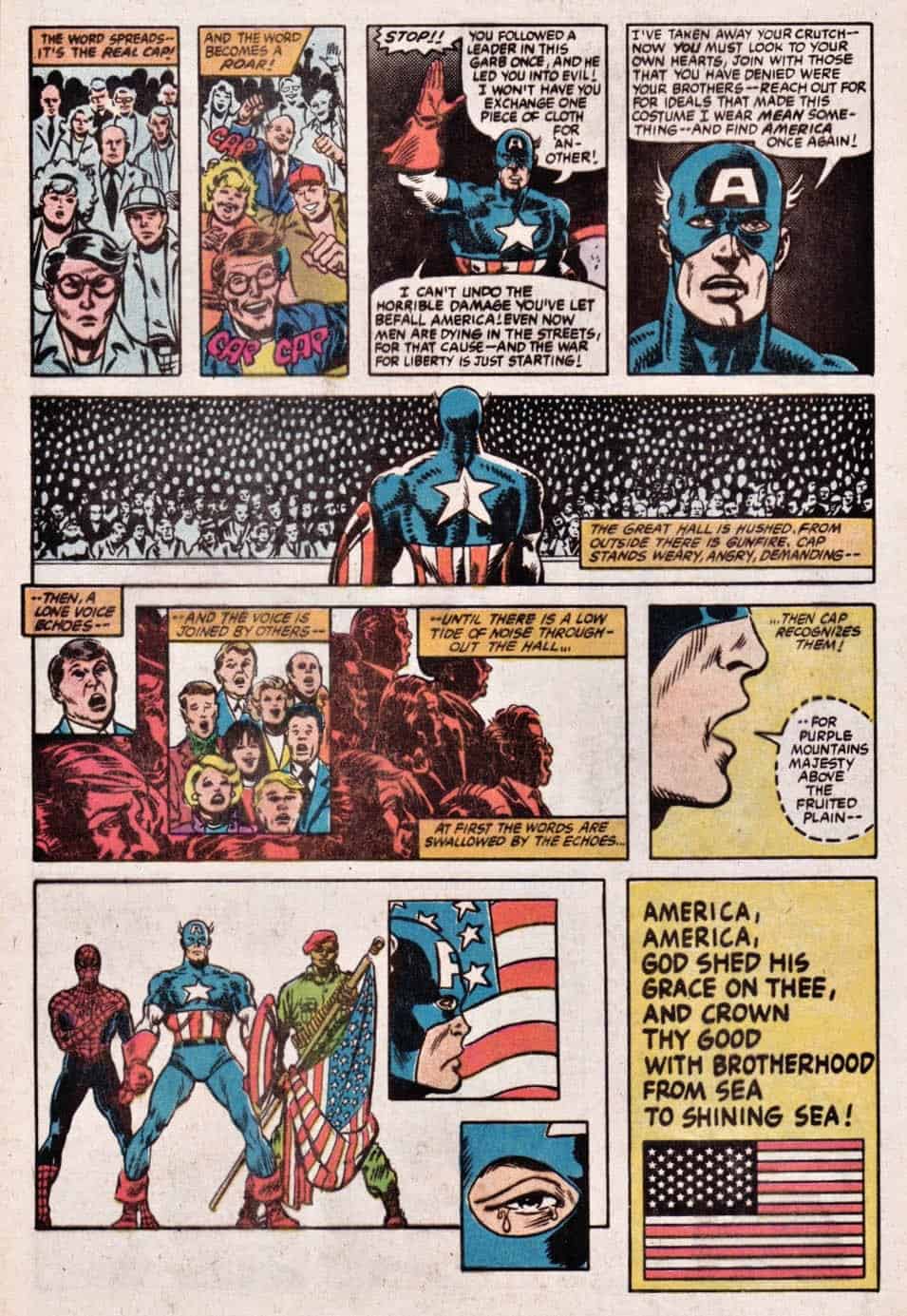
Stories in Marvel Comics’ What If? series are frequently worst case scenarios. Some of them are comically extreme even by the Marvel universe’s standards. Even so, every now and then, one of those What If’s depicts a worst case scenario that is actually more plausible than what really happened in its fictional universe. But, it is all fiction. So in the end, a road not traveled doesn’t really matter. Unless it’s not just fiction. Unless the alternate world the comic depicts isn’t just a worst case for the Marvel universe but a worst case for the real world. In1984, What If #44 stumbled into a story that would never happen, not in the Marvel world or the real one. A story that would never happen and could never happen.
Unless maybe it can.
A Namor temper tantrum was ultimately responsible for Steve Rogers, the real Captain America, getting thawed out and revived–which in turn led to him joining the Avengers. In What If? #44, Namor doesn’t have that particular temper tantrum, and Steve stays frozen for many more years. Flash forward to the present where a “glorified janitor” working at an unidentified facility is tired of the United States indulging communists. He awakens Captain America and Bucky who are frozen in some kind of suspended animation in the hopes that they will save the country. In truth these are copies of the real Captain America and Bucky who were brought out briefly in the 1950s and who have psychopathic tendencies. The two heroes take quickly to modern crime fighting and quickly win over the public.
Fake Cap begins expressing disappointment in a lack of patriotism compared to what he saw during World War II. He accuses minority groups of making it possible for communists to undermine the country. Eventually he throws his considerable celebrity status behind a longshot senate candidate named Norman Chadwick. Chadwick wins and in subsequent years pushes for extreme government control such as national ID cards, emergency powers to put down riots, and eventually policies that effectively restore segregation. Fake Cap lends his support to all of these efforts and they all pass in large part because of him. Ultimately the country is narrowly saved by the real Steve Rogers who was found, still frozen, in the ocean.
What If? #44 is astonishingly prescient. It reads in places like someone time traveled from circa 2018 and wrote a comic in 1984. “That’s going on right now!” many readers will say. And those readers will be justified in saying so.

The first thing that Fake Cap does after getting a measure of notoriety is to go on television and talk about how the loyalty to American ideals has been eroded–patriotism has been lost. Fake Cap’s longing for a united, patriotic America that he felt existed during World War II, as well as his pushback against agitation to improve society sound very familiar.
“Make America great again.”
This longing for an earlier, supposedly better time is not a new idea despite how loud that call has been since 2016. And it often pushes back against some form of change. In the case of this story, Fake Cap points to agitation by minority groups as making it difficult for the “good guys” to do their jobs. He immediately others a group of people and creates an “us versus them” dynamic that is linked to his idea of patriotism. This talk show interview is no ride down a golden elevator, but it’s trying to accomplish the same thing.

Rather than run for office himself, Fake Cap throws his celebrity behind someone who is. Once elected, Senator Norman Chadwick proposes a radical idea: national identification cards to make sure that only legal citizens can work in the country. Whether called “illegal aliens” when What If? #44 came out or “undocumented immigrants” now, this is an issue that has spanned decades. In this story, dissatisfaction with the situation led to a radical senator passing a radical bill. In real life, the issue helped catapult a radical into the White House in 2016 and may do so again in 2024. This is an issue that never seems to get solved and is frequently used by both major political parties to gin up anger against the other.
The response to Chadwick’s increasingly draconian methods eventually leads to protests, destruction of property, and violence. This in turn leads to the government giving themselves extra power to put down these protests. And over time in the comic, unofficial “riot police”–essentially brown shirts–wear the Captain America emblem and patrol the streets, looking for anything unpatriotic. Even segregation has returned–at least in some cities.

The United States is not at that point yet, though many think that this is where it’s headed. But enough fear of that potential future exists that it’s easy to look at What If? #44 today and only focus on the radical elements that resemble this time in history. “Look at this dangerous politician,” one might say. “He’s doing what we believe Trump will do. We can’t let this happen for real.” But Fake Cap’s success and the need to somehow overthrow him isn’t where What If? #44’s most important lessons lie. Those are more universal.
Fake Cap’s strategy is a basic one from the start: identify a group of people and blame them for everything that’s wrong with the country. He starts by talking about students and minority groups, and the rhetoric grows from there. Donald Trump represents the most extreme version of this strategy in modern politics, and it’s easy to point to him, his political party, and his supporters as the driving force. It never starts that way, though. Conditions have to develop to make it easy. Trump took advantage of an attitude that already existed and advanced it to gain power and advantage. It happens the same way in What If? #44, albeit much, much faster. Fake Cap, who isn’t that subtle to begin with, doesn’t start with “Let’s bring back segregation.” But he gets there eventually.
This sort of othering can be done by anyone to anyone, and it is critically important that it be called out before it can metastasize. If only Fake Cap and his rhetoric was engaged with and stopped earlier, his world might never have had Senator Chadwick. That’s easier said than done, though, because both Fake Cap and Donald Trump were helped by a media all too happy to play along.
Perhaps the two things that the real Donald Trump and the fictional Fake Cap have most in common is a measure of celebrity. In the comic Norman Chadwick gets elected because “Captain America” publicly supports him. Part of Donald Trump’s support came from the celebrity attached to his television show and all the buildings and products his name was attached to. In 2016, the media couldn’t get enough of Donald Trump–he drove ratings and so was on television all the time. To this day many of Trump’s most fervent supporters don’t know what he stands for. In What If #44, there’s no evidence that anyone knows anything about Chadwick or his proposals–just that “Captain America” supports them. Why think for yourself when famous can do it for you?

All is not lost at the end of What If? #44, though. The real Captain America returns and defeats Fake Cap. At the conclusion of the fight, he admonishes the people for assuming that the United States is the best country in the world. The country is “trash” if its people don’t fight to maintain its principles, he says. He refuses any credit for saving the country, unwilling to replace one flag clad leader with another. If the country is going to be fixed, its people must do it. They can’t turn to a celebrity leader like Fake Cap to do it for them. This might be the story’s greatest message, however simplistic: the United States–indeed any democracy–and the ideals it strives to meet, however slowly, are not lost so long as the people in it won’t let them be lost.

40 years ago, a comic book in a relatively minor series (it was canceled three issues later) depicted a worst case scenario in the Marvel universe. It was brought to life because the man who represented the ideals of his country stayed frozen in a block of ice much longer than he should have. In the real world there is no singular person to fill those shoes. And there shouldn’t be. There should be all of us, every day, vigilantly watching to make sure that the disturbingly possible scenario in What If #44’s fictional world doesn’t come to pass in our real one.





